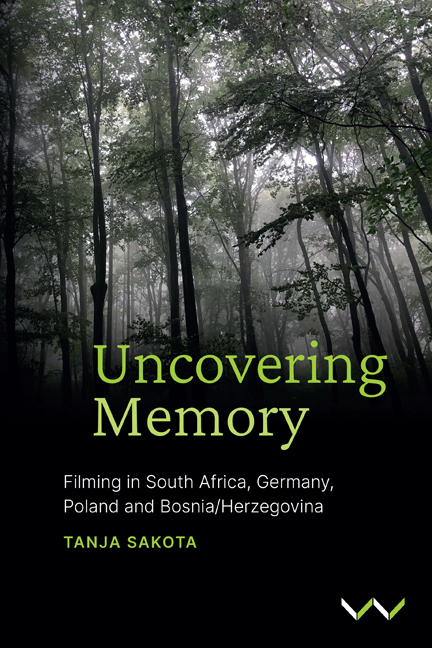Book contents
- Frontmatter
- Dedication
- Contents
- List of Images
- Foreword
- Acknowledgements
- Map of Africa and Europe
- Practice-Based Research, Teaching and Learning
- Part I Working With Students: Cape Town, Johannesburg, Berlin
- Part II Working With Peers: Constitution Hill, Johannesburg
- Part III Working With Myself: Poland, Germany, Bosnia/Herzegovina, South Africa
- Moving Forward
- Film Credits
- Glossary of Terms
- Notes
- Bibliography
- Index
Chapter 12 - The past, relevance and readings
Published online by Cambridge University Press: 24 November 2023
- Frontmatter
- Dedication
- Contents
- List of Images
- Foreword
- Acknowledgements
- Map of Africa and Europe
- Practice-Based Research, Teaching and Learning
- Part I Working With Students: Cape Town, Johannesburg, Berlin
- Part II Working With Peers: Constitution Hill, Johannesburg
- Part III Working With Myself: Poland, Germany, Bosnia/Herzegovina, South Africa
- Moving Forward
- Film Credits
- Glossary of Terms
- Notes
- Bibliography
- Index
Summary
The fact that the space of the Old Fort, the Women's Jail, the Awaiting Trial Block, Number Four and Number Five have been re-produced through the Constitution Hill project as an object of memory generates much thought and discussion concerning social space and social memory. Constitution Hill does not trivialise the past. It is a space that Justice Albie Sachs (2020) identifies as ‘something that would really be ours, deeply, intrinsically and powerfully, passionately, emotionally, aesthetically ours’. The space aimed to contribute to a national narrative and to finding its place in the world. When it was opened on 21 March 2004, significantly on Human Rights Day in South Africa, President Thabo Mbeki proposed in his opening address that the building represented ‘a shining beacon of hope for the protection of human rights and the advancement of human liberty and dignity’ (Freschi 2007, 28). The building was the first major post-apartheid public building (Freschi 2007, 28) and it became an icon that created a democratised collective memory of the horror surrounding this site. The site is multi-faceted not only because of the multitude of victims it pays tribute to but also because it forces us to remember that there is an irony that contextualises the site. According to Kate O’Regan (2014, 169), ‘in a society in which the past has been deeply unjust, and in which the law and judges have been central to that injustice, establishing a shared conception of justice is particularly difficult’. When we look at the bricks from the Awaiting Trial Block that were used to create the backdrop of the new Constitutional Court, we are not only remembering the victims but also the perpetrators, the law enforcement officers who ensured and perpetuated the incarceration and everything that went with it.
For my workshop I chose to use three specific areas: Number Four, the area outside and inside the Constitutional Court, and the Women's Jail. The intention of the architecture of the old and how it is reimagined in the new precinct is noticeably apparent. I wanted to see whether my workshop participants experienced the space in the same way that I did. I wanted to see a visual experience of the space.
- Type
- Chapter
- Information
- Uncovering MemoryFilming in South Africa, Germany, Poland and Bosnia/Herzegovina, pp. 159 - 166Publisher: Wits University PressPrint publication year: 2023



